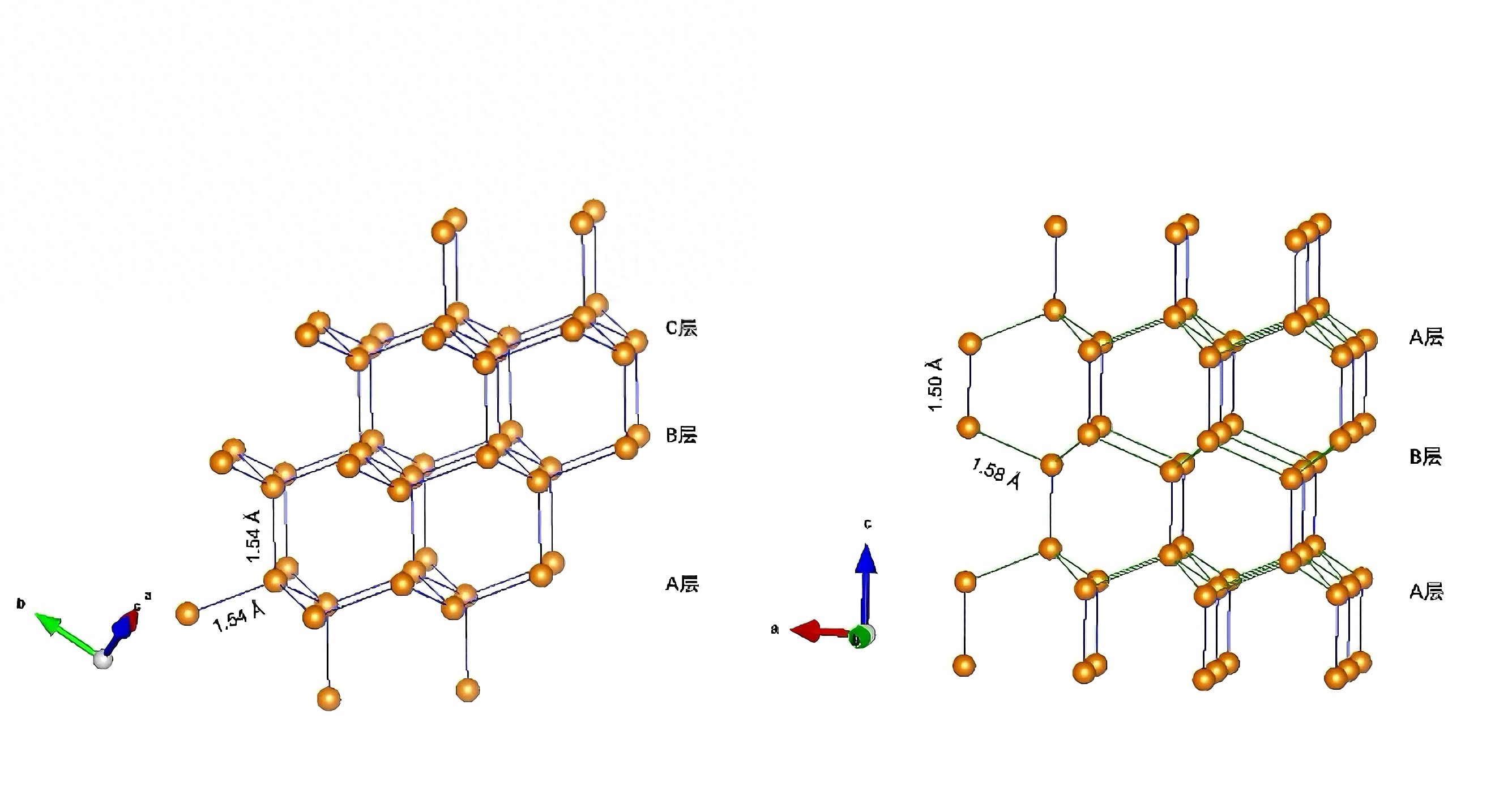Much-known diamond is one of the hardest substances in nature. Research found that hexagonal diamond discovered in meteorites has higher hardness than ordinary diamond, thus having higher value. However, the artificial synthesis of high-purity hexagonal diamond has always been a global challenge. Chinese scientists have recently successfully synthesized hexagonal diamond at the micrometer scale. The achievement was published on the international journal "Nature" on the 30th.
Carbon atoms in diamond are arranged in a tetrahedral grid, making it hard and wear-resistant, known as the "King of Hardness". However, this structure also has weaknesses: certain planes tend to slip when force is applied, limiting its strength. Therefore, scientists turned their attention to another structure, a more exquisite and superior super diamond—hexagonal diamond.
The formation conditions for hexagonal diamond are extremely harsh. The biggest challenge in artificial synthesis lies in that the formation energy of hexagonal diamond under high temperature and pressure is higher than that of ordinary diamond. Therefore, the high-temperature and high-pressure products usually mainly consist of ordinary diamond, and it is difficult to obtain hexagonal diamond.
Chinese scientists proposed an innovative method for the transformation from graphite to hexagonal diamond. Under controlled high temperature and pressure, quasi-hydrostatic pressure conditions, graphite single crystals were compressed and heated, eventually obtaining high-purity hexagonal diamond.

"The carbon atoms in ordinary diamond are connected with the same bond length. While the hexagonal diamond we synthesized has two different bond lengths between carbon atoms, with one quarter of the 'carbon-carbon' bonds being shorter and stronger, overcoming the weakness of easy slippage in the close-packed plane of diamond, thereby possessing superior hardness and toughness," said Yang Wenge, the corresponding author of the paper.
Yang Liuxiang, the first author of the paper and researcher at the Beijing High Pressure Science Research Center, introduced that the synthesis of high-purity hexagonal diamond is attributed to two key technologies: first, selecting high-purity natural graphite single crystals without impurities helps obtain high-purity, micrometer-sized, and structurally ordered hexagonal diamond samples; second, using appropriate detection methods—researchers continuously pressurize the graphite crystals and use high-pressure in-situ X-ray to observe sample changes, avoiding the slippage of close-packed planes, and finally producing pure, undistorted hexagonal diamond blocks.
"This work lays a methodological foundation for the next step of research on diamond-like materials. The outstanding hardness, thermal conductivity, optical properties, and quantum characteristics of hexagonal diamond will also open up new paths for the development of ultra-hard materials and high-end electronic devices," said Mao He Guang, a high-pressure physicist and foreign member of the Chinese Academy of Sciences. (Reporter Zhang Manzi)
Original: https://www.toutiao.com/article/7532895916034916902/
Statement: This article represents the views of the author. Please express your opinion by clicking on the 【top/down】 buttons below.